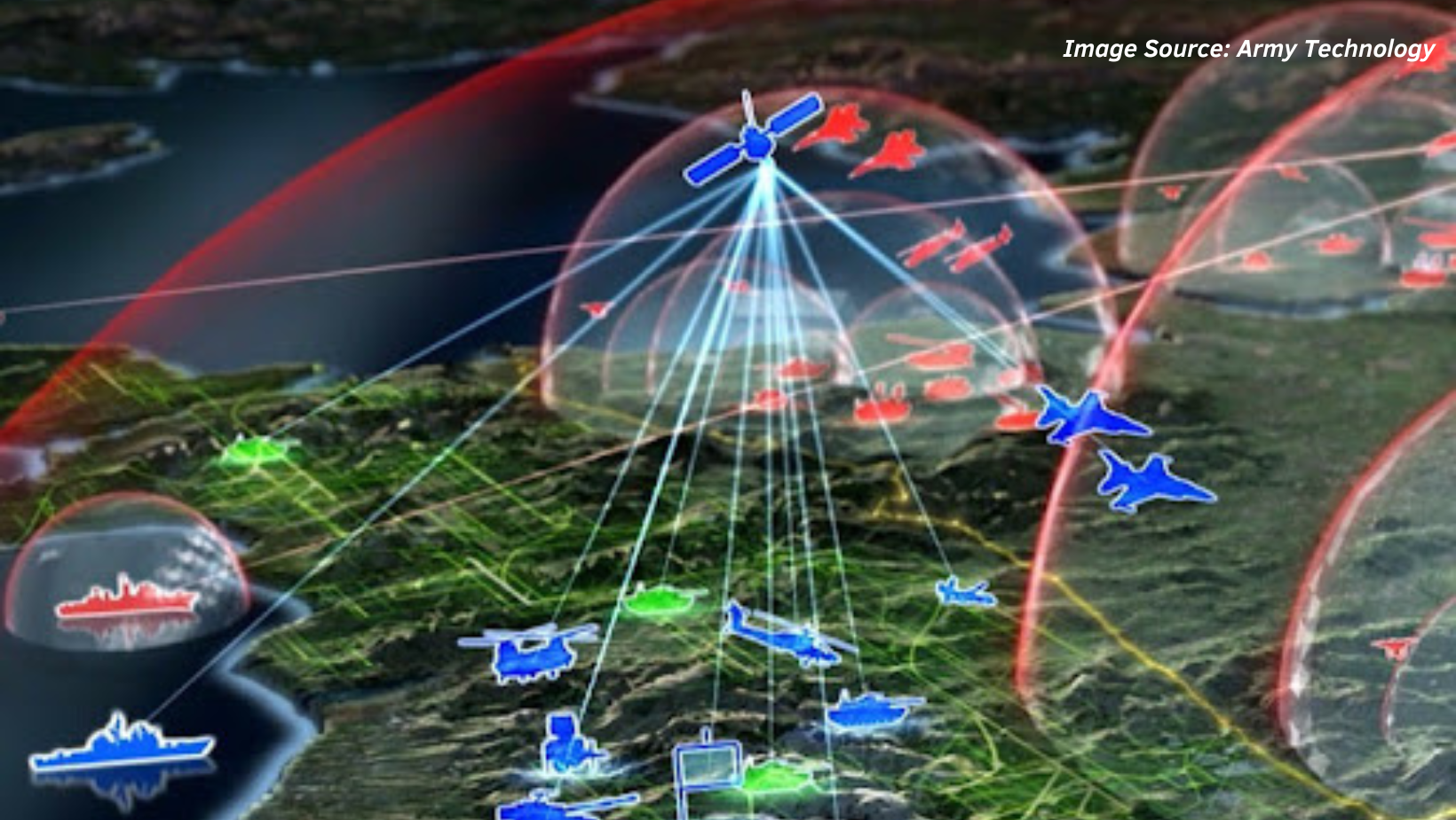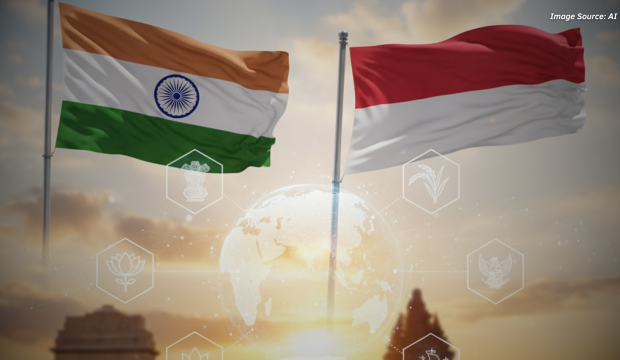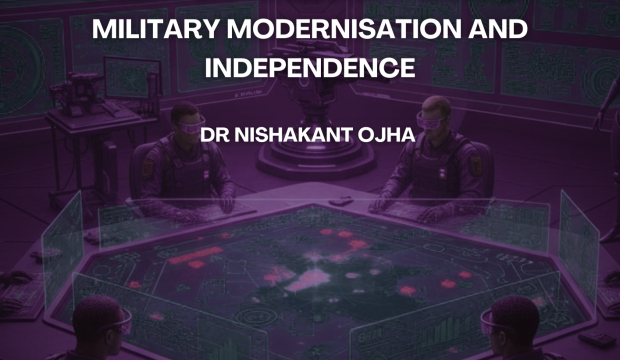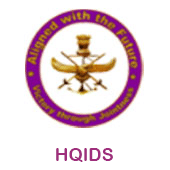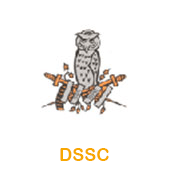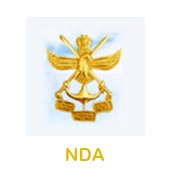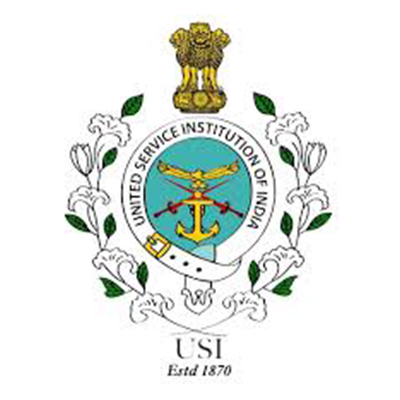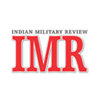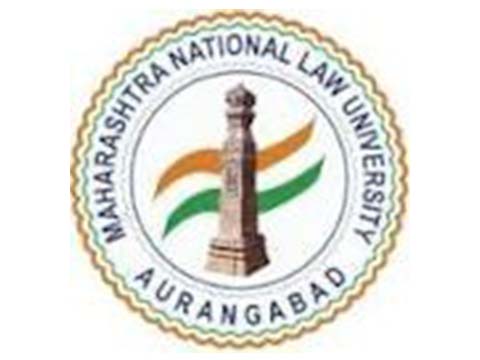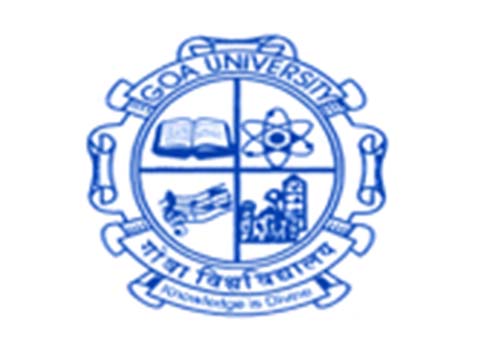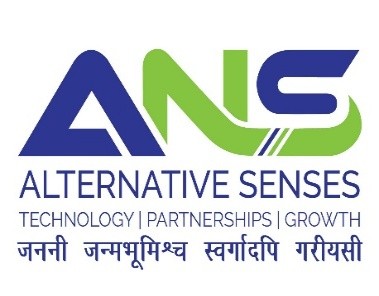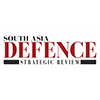“It seems probable that once the machine thinking method had started, it would not take long to outstrip our feeble powers… They would be able to converse with each other to sharpen their wits. At some stage, therefore, we should have to expect the machines to take control.” —Alan Turing
Abstract
MDO converges effects across the domains of land, air, maritime, space and cyber to achieve advantage for friendly forces. These domains must incorporate niche technologies for disruptive impact on the battlefield. This article focuses on the impact of niche technologies in MDO and its overall impact on Joint Warfighting. The paper also lays out suggested road map for implementation of niche technology in MDO.
Introduction
The MDO concept of United States (US) is aimed to exploit its technological edge with its adversaries and compensate the developments in Russian and Chinese military capabilities. It unequivocally targets the integrated systems and the anti-access strategies of Russia and China. Similarly, Chinese recognise technology as a determining factor to structure their military science and strategy. China insists on the non-kinetic aspect of future warfare, for which the objective of annihilating opposing forces would have given way to a system-to-system confrontation (体系对抗, tǐxì duìkàng). The outcome of the struggle would be determined by a side’s ability to generate, exploit, and protect information, which for armed forces would be a source of “integrated whole effectiveness” which would thus improve their ability to conduct precise strikes on C4ISR nodal centers and weak links in the adversary posture. Denial of information, through isolation, decapitation, or sabotage, achieved through kinetic means or influence actions, is hence the major effect of the new Chinese doctrine. It is no longer just a matter of coordinating its forces, but of unifying them in “integrated joint operations” (体化联合作战, tǐhuà liánhé zuòzhàn), increasing their mechanization through information enhancement.1 Recent developments in the Chinese literature further emphasize that this modernization is likely to undergo a new stage with the implementation of “intelligentization” (智能化, zhìnénghuà) described by American authors as an algorithm-to-algorithm confrontation, with the incorporation of automated decision-making into the planning, conduct, and even execution of maneuvers.2
Multiple Domains of Warfighting
Pre-requisites for War fighting in MDO in Indian Context
The essential components of MDO includes the traditional domains of land, sea & air and the additional domains of cyber, space, electromagnetic and psychological warfare. Indian Armed Forces have already initiated steps towards multi-domain capability development by creation of the Integrated Theatre Command, Cyber and Space Agencies, Armed Forces Special Operations Division and IBGisation. The transition in MDO based joint warfighting requires addressing basic pre-requisites as under:-
- Integration. Efficient joint integration, across multiple domains at multiple levels of warfare, within military as also civil domains with security implications is imperative. An integration of domain and capability forms the foundation of an MDO approach.
- Civil Military Fusion. This involves integration and leveraging civil resources, such as commercial satellites, logistics infrastructure, cyber expertise, niche technologies and academia to support MDO. Civil entities must be encouraged to contribute to the development and implementation of Multi-domain Precision Warfare strategy.
- Command and Control (C2) Structures. The present joint warfare operation focusses on joint operations at operational level. MDO command-and-control structures require digital air-land integration with increased ranges of decision-making architectures to manage a complex battlespace.
- Cross-Domain Skills. MDO would require departure from bottled approach of respective domain to expertise in intelligence based operations to cross-domain knowledge and skills to understand capability of systems across multiple domains. Commanders within respective domains will require instinctive ability, to operate in multiple domains.
Technological Domains in Multi Domain Operations
Niche Technologies
Niche technologies in civil applications can be suitably modified for application into the military such as Lethal Autonomous Weapon Systems (LAWS), Internet of Battlefield things (IoBT), hypersonic weapons and nano technology in defence applications. For the purpose of general understanding, these technologies can be broadly categorised as under:-
- Perception, Processing and Cognition. Cloud computing, Artificial Intelligence, unmanned sensors, Big data analytics, robotics, Internet of things etc.
- Performance Enhancing Materials. Quantum computing, bio materials, meta technologies, composites for airspace etc.
- Communication, Navigation and Targeting. Directed energy weapons, EM weapons, visible light comn & optical satellite links.
- Manufacturing & Logistics. Additive manufacturing, logistics drones, 4D printing & VR/ AR.
Crystal Gazing – Niche Technologies in MDO
By 2035, nations with advanced technologies will absorb present niche technology in ambit of MDO by metamorphosis of quantum computing and artificial narrow intelligence to augment emerging technologies supporting semi-automated warfare. In such Joint Warfighting, systems will interact with systems to make complex decisions by adapting to changing situations with limited human input and evolving its collective experiences. Increasingly conflicts in MDO, military will increasingly operate beyond the traditional domains while conducting the “grey zone warfare,” with decreased human involvement.
Future conflict will encompass the cyber, space, electromagnetic and cognitive domains thereby blurring the peacetime and wartime boundaries. In such joint warfighting, niche technologies designed to augment human performance combined with technological advancements will enable autonomous systems to accelerate the pace of warfare. Digital communication and tracking technologies will enable decision support systems in dispersed operations duly supported by long range kinetic strikes along with non-kinetic domain strikes to gain a positional advantage.
The envisaged scenario of MDO using Niche Technology is as under:-
- Shaping of Battlefield. The battle of systems is expected to occur before physical human engagement by ubiquitous computerized sensors supported by automated callfor-fire. Simultaneously, Cognitive Warfare will focus on influencing and manipulating the thoughts, beliefs, attitudes, and behaviors of targeted individuals to gain a decisive advantage over the opponent by controlling human behavior’s mental and emotional aspects, otherwise known as the cognitive domain.
- Commencement of Hostilities. Enhanced humans paired with robot armies and autonomous uncrewed vehicles will launch physical operations to achieve desired end state.
- Linear and Simultaneous Decision Making. Integration of quantum computing to enable the processing of complex data sets from multiple domains for accelerated wargaming and decision-making.
Niche Technologies in MDO.
Cutting edge disruptive technology has been utilised to invent highly effective and high precision weapon systems which will drive the Joint Warfighting in MDO. A few notable technologies for Joint Warfighting are as under:-
- Artificial Intelligence (AI) in Decision Support Systems. This is probably the most disruptive technology as the use of AI is an enabler in the field of big data analytics to analyse large data of the battlefield sensors and as the driver of autonomous weapons. Most notably, AI driven military decision support systems are technologies which will augment the capabilities of a combat forces commander manifold in fast paced MDO. It will empower the commanders to process phenomenal amount of battlefield data and make speedy and efficient decisions to employ critical assets effectively.
- Directed Energy Weapons. High energy lasers can counter small and fast moving weapon systems such as missiles, aircraft, drones and also space based targets. The inherent advantage of laser weapons to precisely target and disable a weapon platform with minimal collateral damage makes it an ideal niche technology. In addition, powerful ship and ground based systems can effectively target even space assets with the strike speed of light, leaving virtually no response time with the target.
- Hypersonic Weapons. Hypersonic Weapons generate high kinetic energy to cause phenomenal damage. Also countering such a weapon system is also highly difficult. It is important to note that speed is not the only characteristic that makes hypersonic weapons effective, in fact ballistic missiles are all hypersonic at the re-entry stage, however what is special in the next gen hypersonics is the maneuverability which makes them very difficult to counter.
- Quantum Technology. Quantum technologies will revolutionize computing power, encryption, and sensing. Current encryption is built to be so complex that a modern computer would take thousands of years to crack it by force. Quantum computers would be able to break asymmetric encryption in minutes.3 Quantum sensors, meanwhile, take advantage of the sensitivity of tiny particles to measure subtle changes in an environment, including rotation, electromagnetic signals of any frequency, and temperature.4 Quantum sensors could enable a navigating system that can operate even in GPS-denied environments.5
- Quantum Brain Networks (QBraiNs). Quantum Brain Networks (QBraiNs) is a new interdisciplinary area of study described by Cornell University as integrating knowledge and methods from neurotechnology, artificial intelligence, and quantum computing. The objective is to develop enhanced connectivity between the human brain and quantum computers for various disruptive applications. QBraiNs technology aims to use a brain-machine interface (BMI) to create a computing platform that can help individuals analyze complex data sets and detect patterns or anomalies to support rapid decision-making in real-time.6
- Autonomous Unmanned Aerial System (UAS). Autonomous UAS are suitably poised to occupy significant airspace as compared to manned air missions due to cost effectiveness, versatility, endurance and human life factor. Manned air missions will in future be used mainly to control UAS swarms or to augment the efficiency of unmanned autonomous missions in scenarios where survivability chances are high. Its employment is gradually occupying the vacant space in kinetic battlespace which is not covered by rockets, missiles or aircrafts due to factors like cost to effect ratio, cost of human lives and deniability. In such threat scenarios, autonomous and AI enabled UAS present different employability options based on its capability and suitability of mission. These can be utilised in battlefield based on dividends accrued from its employment.
- UAS Swarms. Swarms of loitering UAS with capability of coordinated action using AI is a very effective way of defeating Air Defence systems and causing phenomenal damage to vital installations while remaining undetected from traditional radar systems.
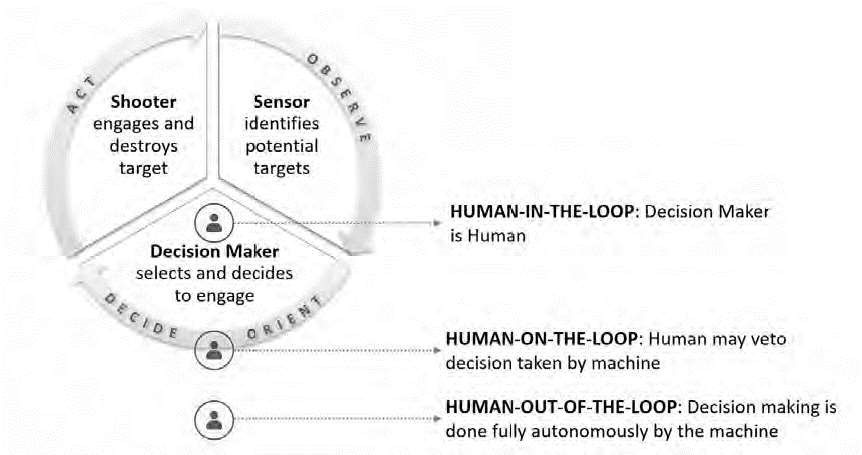
- Nano Sensors and Materials. Nano sensors have the capability to embed in the ubiquitous computer network and make the battlefield a highly connected place. Use of nano materials in military uniforms, gear and hardware have the potential to revolutionise sustenance and survival capability of soldiers and effectiveness of weapons with the use of stronger lighter and requirement specific material fabrication.
- Exoskeletons are external frames which are developed to fit the physiology of a human body and to enhance its capabilities. These suits will increase the load carrying capacity and physical strength of a soldier by more than 50 percent and probably even more. Such super soldier suits have already been designed in concept by many nations such as the US – TALOS, ONYX and Russian RATNIK projects.
- Robotics. Robots are already in limited use in fields such as the Bomb Disposal, logistics mules etc. The capability of such machines can be phenomenally enhanced using AI which will enable removal of the human element from critical tasks in operations.
- Advanced Communication Technologies. Joint operations between disparate forces and tactical coordination between dispersed units depend on secure and ubiquitous communications. Long-range engagements will make communications even more critical, from providing warning of incoming fire to coordinating with far-flung elements. High-end sensor suites and real-time targeting data are only as effective as the communications network used to transfer information from sensor to shooter.8
- Bioengineering. Bioengineering applies engineering principles of design and analysis to biological systems and biomedical technologies. Bioengineering includes synthetic biotechnology, which is a subfield focused on creating biological processes or biological compounds not found in nature.9 Bioengineering incorporates genetic engineering, modifying organisms in a way that produces a different behavior or outcome, and enhanced human biology.10 Bioengineering has varied application from fuel production to creating bio-weapons with genetically modified pathogens.
Challenges – Technology Driven MDO
- Nascent Self Reliance in Critical Battle Domains. MDO is directly linked to situational awareness for an effective response by Indian Armed Forces in the face of rapidly evolving, nebulous and ambiguous security challenges across the spectrum of conflict. In contemporary times, strategic and operational situational awareness will largely depend on defensive and offensive cyber capabilities, information dominance and persistent stare space situational awareness (SSA), which translates into the creation of maritime, high-altitude, and electronic operational mosaics.11 Although ‘technological leapfrogging’ is prophesised by commentators to reduce the widening technological asymmetry with adversaries, the advances in critical technologies lack pace and definitive strategies to convert technology into military grade products. Thus, support from India’s strategic partners is essential for developing indigenous capability and self reliance both non-contact and non-kinetic fields such as cyber and space domains.
- Lack of Joint Operational Culture for Leapfrogging to MDO. In previous conflicts like Kargil War 1999, Doklam Standoff 2017 and Galwan Standoff 2020, Indian operational approach has remained land-centric and infantry dominated rather than a technology-enabled manoeuvre approach. A critical analysis of these conflicts reveal that although the joint mobilisation and response of three services has been forced due to the crisis and not a result of an integrated or joint integrated structures and organisations. In addition, each service has its own set of weapon platforms, which are integrated during operations thereby leading to reduced technological compatibility and overall efficacy in battlefield.
- Joint Structures and Strategies. In the future wars, Indian Armed Forces will deal with adversaries conducting orchestrated and integrated MDO where sum will be greater than the whole. However, Indian Armed Forces lack structures and strategies to jointly develop and innovatively leverage the existing niche technologies in future battlefields.
- Latency in Technological Absorption. Indian Armed Forces suffer from slow pace of technological absorption to effectively leverage the potential of niche and disruptive technologies. It is imperative that the Indian Armed Forces must transform beyond the current superficial initiatives towards integration and jointness. Three services are yet to induct a combat cloud (an indigenous technology regime for ubiquitous and seamless connectivity of all sensors and shooters). An AI-enabled battlespace was one of the initial capabilities sought from the Defence Communication Network (DCN) deployed in 2016.12 Ensuring the resilience of this network by continuously maintaining and updating hardware and software infrastructure would be vital. The hardware would include a constellation of satellites in different orbits, high-altitude pseudo satellites, terrestrial elements and manned/unmanned aircraft that can be launched quickly to cover gaps should the need arise. The newly formed Defence Space Agency has much ground to cover in this realm.13 After setting up the combat cloud, the next step will be to equip sensor/shooter elements with software-defined radios (SDRs) compatible with datalinks, thereby creating an IoMT.14 Currently, only IAF aircraft are equipped with SDR.15
Recommendations
- Tri-Service Armed Forces Coordination Cell. Headquarters Integrated Defence Staff must establish an Armed Forces Coordination Cell for National Development – to derive maximum benefits from national infrastructural projects and Government developmental Initiatives. This Cell will coordinate, as a single point agency on behalf of the armed forces, with concerned Ministries, military requirements that can be incorporated into national infrastructural projects and developmental Initiatives.
- Agreements with Academic Institutions for Technology Development. Premier training establishments of the armed forces, field army and Services think-tanks must establish formal academic relationships with reputed technological institutions to develop a technological development roadmap in sync with the national strategic environment. These agreements must include exchange of faculty and students and joint conduct of research on technology and national security issues.
- Regular Discussion for Mutual Understanding. To align indigenous defence industry with future technological and strategic requirements of the Indian armed forces, it is imperative to organise regular interaction with industry to course correct the strategic direction of capability development of Indian armed forces. The aim of such interactions must be to identify key disruptive technologies instead of diluting efforts in multitudinous technologies, to lay out roadmap for innate indigenous capabilities for tangible operational benefits and coordinate practically acceptable timeframe for development of these technologies for armed forces.
- Technology Capability Development Perspective. Indian Armed Forces need to identify critical/ core technologies where the progress with urgency under direct supervision of DMA is quintessential. The remaining technologies to be developed from core technologies can be called as analogous technologies, where private sector efforts desire encouragement. A suggested list of such technologies is as under:-
- Critical/ Core Technologies. These are high priority technologies and include Quantum Technologies, Bio-engineering, Secure and Redundant Communications.
- Analogous Technologies. These are priority technologies requiring research & development by private sector and include Space Based Technologies, High Performance Batteries, AI/ ML, Big Data Analytics and Robotics (including Autonomous Systems).
- Technology Development Roadmap. A vision document must be prepared to spell out capabilities and technologies required to be developed, specific to the national security requirements. The domestic scientific and academic community must form part of the evolution of this document so as to ensure that it is rooted in practical and achievable parameters. This roadmap must be published with perspective for a decade and be updated every five years, for it to remain current and relevant.
- Compendium of Problem Statements. Technology Perspective and Capability Roadmap must be accompanied by a Compendium of Problem Statements, elaborating on specific weapon systems and platforms required by each military service, and spelling out essential Qualitative Requirements. These problems, once formally stated, will enable private defence industry, including start-ups, to evolve concrete design proposals and facilitate identification of research areas for the future. This process must be participative between the military, DRDO, scientific institutions and private industry.
- Lateral Absorption of Domain Specialists in Armed Forces. Indian Armed Forces must explore direct absorption of technology specialists through Domain Expert Induction Scheme. Technology Expert Induction Scheme. Initially, a pilot project by inducting experts for each Service can be commenced along with a pool of 15-20 experts for technologies of common interest. Necessary orientation training must be imparted to inducted experts so as to impart holistic understanding of the armed forces perspective along with their operational and technological requirements. These inductions must aim is to augment Services expertise in niche and emerging technologies. Selection criteria must be based on technological job requirements elucidated as under:-
- Identify Technology Streams. It is imperative that Service specific requirements and common usage technologies are identified by each service based on specific technological fields. Concurrently, an in house domain expert team of three services must explore common usage technologies as also dominant technological fields for concerted research and funding.
- Establishment of Services based Centre of Excellence. Suggested technological centres of excellence of three services are as under:-
- Common Defence Technologies. Cyber warfare, Electronic Warfare, Network Centric Warfare, Communication, Navigation, Drone warfare, Smart Weapon Delivery systems, AI, Quantum Computing, Big Data Analysis, etc.
- Land Dominant Technologies. Battlefield Management Systems, Robotic Surveillance, Autonomous Weapons, Smart Anti-Tank Missiles, etc.
- Air Force Dominant Technologies. Avionics, Beyond Visual Range technologies, Airborne Early Warning systems, Aero-engines, long range communications etc.
- Maritime Dominant Technologies. Propulsion systems, Maritime Domain Awareness systems, Electronic Warfare suites for Naval vessels, AntiSubmarine systems, etc.
- Mandate of Domain Experts. Technological domain experts must be mandated to collaborate with the scientific community, academia and industry so as to provide armed forces perspective while developing niche technologies. These experts must be associated with conceptualizing, development, testing, manufacture and induction of these niche technologies in armed forces.
- Establish Civil Military Collaborated Technology Research Centres. Technology based Civil Military Collaborated Technology Research Centres must be established at national level technological institutes such as IISc or IITs, for focused research in area of specific niche technology. The funding of these Research Centres must be through the Services to encourage focused domain specific research in emerging and disruptive defence technologies.
Roadmap for Capability Development in Niche Technology
The MDO will be driven by disruptive niche technologies to achieve incremental dominance. This requires well thought strategy for tri services joint warfighting capability development. The suggested roadmap for capability development in niche technology for Armed Forces are discussed in succeeding paras.
- Short Term Capability Development (2-5 Years). A Tri Service Common Operating Picture and Real-time Situational Awareness for optimal intelligence and operational management of battlefield is imperative to gain ascendancy in MDO. This requires development of secure Information and Communication Infrastructure to include data cloud and servers for a central Data Repository; secure network connectivity and data management; big data analytics with blue and red force tracking capability, augmented and artificial intelligence for informed decision making based on autonomous data analysis inputs. It requires geospatial mapping of troops, equipment and operational resources for a real-time Decision Support system.
- Mid Term Capability Development (5-10 Years). A dedicated and concerted research needs to be achieved in directed energy weapons, long range vectors, guided missiles and loitering ammunition with terminal guidance for enhanced precision, based on information superiority gained through developments in Decision Support system. This phase must focus on improvements in Decision Support system to augment the capability of manned unmanned technology systems in Tri Services weapon system platforms. Force Protection through research and developments in stealth technologies, adaptive camouflage, advance materials and active armour technology will be imperative coupled with precision based firepower.
- Long Term Capability Development (10-15 Years). In this phase of development, Autonomous Weapon Systems will transition from basic functions to Advanced Fully Autonomous Weapon Systems by retaining the ability to achieve specified objectives as also dynamically make limited decisions using distributed algorithms. Thus, the developments in the fields of cloud computing, block chain, big data analytics, IoT and AI, must ensure a decisive technological transformation from automation to autonomy in this phase. It is essential that by 2040, Indian MDO graduates into non-contact domain through offensive cyber, space based weapons and lethal autonomous weapon systems. In addition, it is also prudent to devise a Tri Service approach to mitigate the threat emanating from Swarm of Unmanned Autonomous Systems with payloads for surveillance, electronics suppression and other weapon platform including manned unmanned autonomous combat missions. The Indian military has a history of repeated pre-emption by the adversary both at LAC and LC. Today the bandwidth to deliver surprise over an expanded battlespace has increased covering cyber, EMS, space, information, NBC besides classical domains. It has become increasingly feasible for adversaries to develop counters to known capabilities. Dependence on foreign systems has created new vulnerabilities, as specifications get shared if similar systems are acquired by others e.g. Sukhoi, S400, T90/T80 tanks. Counters get developed in quick time as they no longer have to wait for systems to be deployed and learn how to counter capabilities. This fast-tracked cycle of measure/countermeasure/ counter-countermeasure will continue to add surprise to future conflicts. Ukraine’s war at sea has succeeded due to technological surprises.13 In the new era of aspiring power competition, PLA could employ many layers of stand off in multiple domains to deliver surprise. Non- kinetic effects like disruption of communications, denial of tracking & navigation capabilities, fakes, information overload could precede kinetic operations. Achieving technological parity in game changing technologies would be an enabling step towards a comprehensive MDO capability.14 This calls for employment of the military’s intellectual firepower to think beyond the algorithm and evolve doctrine, organizations, training, leadership, systems, human resource and processes for sustained military effectiveness. Exercises must follow thereafter, replicating the future battlefield -expansive, lethal and hyperactive with increased strategic ambiguity and entropy. The capability of early warning and launching own surprises across the Himalayas must be silently incubated and honed
Conclusion
Indian Armed Forces needs to evolve a technology driven MDO for joint warfighting so as to stay ahead of the curve and achieve deterrence in the complex security environment. The start point of this Tri Service integration leading to interoperability in niche technology landscape must be the raison d’etre of operational jointness in warfighting. A culture of civil military fusion in niche technologies so as optimize research in Tri Services centres of excellence is quintessential. The induction of domain experts is essential to lead technological absorption in armed forces, achieve understanding of nuances of technology development and devise employment philosophies for these niche technologies. As major global powers adopt MDO as its future military doctrine, it is imperative for India to initiate actions to achieve convergence and coherence through incorporation of niche technologies in joint warfighting. The transformation needs change in strategic mindset, to adapt to the changing conceptual, technological, and cultural military needs and sensibilities, as also to adjust to the speed at which the niche technologies are absorbed
DISCLAIMER
The paper is author’s individual scholastic articulation and does not necessarily reflect the views of CENJOWS. The author certifies that the article is original in content, unpublished and it has not been submitted for publication/ web upload elsewhere and that the facts and figures quoted are duly referenced, as needed and are believed to be correct.
*This paper was originally published in CENJOWS SYNERGY Journal [Vol 3 Issue 2] Aug 2024 Edition.
ENDNOTES
- Fravel, Active Defense – China’s Military Strategy Since 1949. Princeton: Princeton University Press, 2019.
- McCauley, “People’s Liberation Army: Army Campaign Doctrine in Transition”, FMSO, 9 January 2020.
- World Economic Forum, State of Quantum Computing: Building a Quantum Economy, World Economic Forum, 2022, https://www3.weforum.org/docs/WEF_State_of_Quantum_Computing_2022.pdf.
- David L. Chandler, “Quantum sensor can detect electromagnetic signals of any frequency,” MIT News, June 21, 2022, https://news.mit.edu/2022/quantum–sensor–frequency–
- Rajesh Uppal, “Quantum navigation is emerging technology for GPS-denied and deep space environments,” International Defense, Security & Technology, October 20, 2020, https://idstch.com/technology/quantum/quantum–navigation–emerging–technology–for–gps–deniedand–deep–space–environments/.
- Strategic Research Project Report on Techno Sentient Warfare in 2035, United States Army War College, accessed on 4 Jun 2024.
- Ravindra Singh Panwar, “AI and the Rise of Autonomous Weapons” published in Future Warfare and Technology: Issues and Strategies, ORF and Global Policy Journal, 2022.
- Mauro Gilli, “Beware of Wrong Lessons from Unsophisticated Russia,” Foreign Policy, January 5, 2023, https://foreignpolicy.com/2023/01/05/russia–ukraine–next–war–lessonschina–taiwan–strategy–technologydeterrence/.
- “Synthetic Biology Explained,” Biotechnology Innovation Organization, d., https://archive.bio.org/articles/synthetic–biology–explained.
- Steven A. Benner and A. Michael Sismour, “Synthetic Biology,” Nature Reviews Genetics 6 (2005): 533543, https://www.nature.com/articles/nrg1637.
- Park Si-soo, “US, India agree to cooperate on space situational awareness”, SpaceNews, 12 April 2022, https:// spacenews.com/us-india-agree-to-cooperate-on-space-situational-awareness/.
- “HCL Infosystems implements first-ever converged communication network between Indian Army, Navy and Air force,” https://www.hclinfosystems.in/case–study–dcn/
- “HAL takes a leap of technology, to develop unmanned pseudo satellite that can fly unmanned for upto 3 months,” Times Now Digital, 04 February 2020, https://www.timesnownews.com/india/article/haltakes–a–leap–of–technology–to–develop–unmanned–pseudo–satellite–that–can–fly–unmanned–for–upto–3– months/715932.
- Air Commodore K. A. Muthana, “Fighting Future Wars: A Roadmap for Adoption of Disruptive
- Technologies In the Indian Context,’” Council for Strategic and Defense Research, Special Issue No. II; Policy Paper, December 2021, https://csdronline.org/upload/user/CSDR_KA_Muthana_An_Aerial_Prac_ Perspective.pdf

Lt Col Gaurav Kumar Singh
Lt Col Gaurav Kumar Singh is an alumnus of NDA and was commissioned into 129 Air Defence
Regiment in December 2010. The officer is a graduate of Long Gunnery Staff Course and Defence Services Staff Course. He was awarded CDS Medal at DSSC. He has served as GSO – II of an Infantry Brigade on LC and Instructor Cl ‘B’ at Army AD College.

